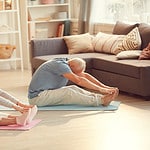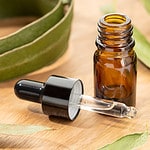Introduction
Knee pain is a common occurrence and can be caused by many things. Braces and supports are a great way to help reduce the level of pain and offer more support to your knee. Benefits include improved movement and added security.
Braces and supports can help reduce symptoms of conditions such as arthritis, jumpers/runners’ knees, meniscus injury/tear, tendinitis and patellar tracking disorders. This can include reducing swelling and stiffness.
Moreover, braces can help with post-surgical rehabilitation. They can limit excessive movements and provide stability while muscles regain strength.
Overall, braces are beneficial for knee pain. They develop muscles and reduce painful symptoms. Also, look at other treatments like physical therapy to ensure long-term success and to understand how to best care for yourself.
Causes of Knee Pain
Knee pain is a common problem. It can be caused by direct trauma, overuse injuries, or regular strain. Age-related arthritis can also cause it. Some people may even get knee pain from medication, illnesses, or allergies.
Knowing what is causing your knee pain can help you find the best way to manage it.
Osteoarthritis
Osteoarthritis is the most common cause of knee pain. It is also known as “wear and tear” arthritis. This type of arthritis involves the wearing away of the cartilage in your knee joint. Cartilage cushions the bones during movement. When it wears away, the bones rub against each other – causing pain, swelling, and stiffness.
Other causes of knee osteoarthritis:
- Obesity
- Age-related changes
- Genetic predisposition
- Bone or cartilage disease or damage
- Previous trauma to the joint
Treatment may include physical therapy exercises, anti-inflammatory medicine, steroid injections, or surgery to repair cartilage.
Overuse Injuries
Knee pain can be either acute or chronic. Overuse injuries are a common cause and start gradually, often from repeating activities. This type of injury is common in people playing sports such as running, soccer, skiing, cycling and basketball.
Overuse injuries are from the muscles and soft tissue around the kneecap being overstretched or torn due to too much strain. Symptoms include swelling, tenderness, stiffness and sharp pains when kneeling. Osteoarthritis is an overuse injury. It happens when the cartilage that cushions between the bones wears away. It can lead to damage of nearby tissues and bones. Other signs are joint noises, stiffness after resting and limited range of motion.
To avoid overuse injuries, warm up before exercise and stretch afterwards. Don’t overwork muscles. Change activities and intensity levels. Cross-train to keep muscle groups balanced. Get rest so muscles can recover.
Post-traumatic Arthritis
Post-traumatic arthritis of the knee is a type of osteoarthritis. It occurs when the joint cartilage covering the ends of bones wears away. This leads to bone-on-bone contact and pain. Causes include tears in ligaments, meniscus tears, failed surgeries, and joint infections. Symptoms range from minor aches to pain at rest.
Left untreated, post-traumatic arthritis progresses quickly. Treatments include lifestyle changes, medications, braces, and physical therapy. EULAR approved injectables like hyaluronic acid may also help with knee pain. In serious cases, knee replacement surgery may be recommended.
Benefits of Braces and Supports
Braces and supports? Super helpful! They assist in managing knee pain and avoiding more damage. Numerous advantages of using braces and supports exist. From pain relief to better mobility. Let’s see the various types of braces and supports available and learn how they work to ease knee pain and enhance stability.
Pain Relief
Braces and supports can be a great relief for knee pain caused by chronic conditions, tendonitis and others. Pressure is applied to areas around the knee, providing comfort. For instance, knee braces often have a patella-tracking feature, which keeps the kneecap aligned. Also, a lateral release feature reduces stress on the joint. These features reduce friction between bones and muscles, lessening sharp pains.
Hinged braces, like some others, provide stability for weak muscles and joints. They also prevent injury due to overstretching of ligaments or accidental hyperextension.
Compressive sleeves give direct support, maintaining muscular temperature. This increases circulation around the kneecap, reducing pain.
Braces are useful for managing knee pain from various sources. They can be a primary treatment or a supplementary one during rehab periods. They provide stability and comfort, accommodating muscle needs. Thus, they are worth considering for persistent discomfort.
Improved Stability
Braces and supports give extra stability to ease knee joint pain. This can stop more damage from happening, making it less likely that serious injuries like broken ligaments or fractures will occur. Also, with better stability, recovery time is faster. So, you can go back to your usual activities without much pain.
Furthermore, if you have medical conditions such as osteoarthritis or meniscus tears, braces and supports can help ease the pain.
Reduced Swelling
Braces and supports for knee pain can reduce swelling. When fitted to the knee properly, they limit how far back the lower leg can move. This decreases pressure on the knee, as well as keeps tissues around the knee joint in check. This helps reduce inflammation and increase blood flow.
These braces are especially helpful for those who have injured their ligaments or tendons near the joint, or suffer from osteoarthritis. The brace keeps things from over-moving or extending. This helps keep down swelling, while still allowing a normal range of motion.
Types of Knee Braces
Knee braces come in different types for varying levels of support and pain relief. If you’ve got a knee injury, your doc can tell you which one is best for you. Here’s a look at the different types, their uses, and advantages:
- Compression braces: These are designed to reduce swelling and provide support for weak or injured knees.
- Hinged braces: These provide stability and help limit the range of motion in the knee.
- Rehabilitative braces: These are designed to protect and support the knee while it heals.
- Prophylactic braces: These are designed to prevent knee injuries in athletes.
Unloader Braces
Unloader braces are made to reduce pressure on the knee’s affected area. This helps with both mild and severe pain from osteoarthritis, post-operative knee pain, and more.
They shift weight onto certain joints when walking. This helps limit pain and lets you stay active. Most braces are lightweight and adjustable with straps, a hinge, and a frame for lateral tibial shift.
There are three types of unloader braces:
- Unicentric braces have one point to direct pressure away from the pain.
- Bicentric braces have two points for additional support.
- Tricentric braces have three points for more stability, but require more precise fitting.
Hinged Braces
Hinged braces can be adjusted to stabilize the knee. This helps reduce pain and allows you to move without fear of further injury. Different types of hinged braces are available, depending on your knee issues.
- Lightweight braces can be used by athletes or people with milder knee issues. These provide stability and stop the knee from bending too much.
- Heavier-duty braces are needed for those with moderate to severe arthritis or ligament injuries. These limit movement but still allow some flexibility.
When buying a hinged brace, look for one that supports and is comfortable. The hinge should be close to the knee joint. Many also have adjustable straps for extra stability.
Knee Sleeves
Knee sleeves are a simple, non-rigid type of knee brace. They provide general compression and warmth. They are lightweight and made of neoprene. They often have extra padding in the knee cap area.
Knee sleeves are good for minor injuries. They help reduce swelling and provide comfort during everyday activities. People with weak bow legs may wear them for support during exercise. For more severe knee pain or injury, they can be used under an orthopedic brace.
Knee sleeves should fit comfortably. If using neoprene, make sure it’s breathable. If it has extra cushioning, make sure it’s removable. If a knee sleeve alone doesn’t work, see a doctor for an orthopedic brace or sports tape.
When to See a Doctor
Knee pain? See a doctor! It’s essential to get professional advice and figure out the cause. When should you seek medical help? Consult with a doctor or physical therapist for the best treatment options.
Severe Pain
In case your knee pain is serious and accompanied by swelling, redness or warmth, you must get medical assistance right away. There may be an underlying medical condition that needs treatment. Also, look out for fever, immense pain which stops you from putting weight (especially after a fall or injury while playing sports) and feelings of instability or buckling in the knee. Contact your doctor if you witness any of these signs with your knee pain. Early diagnosis and treatment can help avert additional damage.
Inability to Bear Weight
Are you having trouble standing? You should see a doctor ASAP! This could be a sign of something serious. Causes might be muscle spasm, weak bones, a fall, infection, arthritis, or nerve damage.
Pain, tenderness, swelling, redness, and warmth are things to look out for. Even light activities like walking or going up stairs can be hard to do. Don’t wait – get help now! Your doctor will know what to do and what treatment is best for you.
Swelling
Swelling, or edema, is when fluid builds up in your body’s tissues. It can be caused by infection, injury, or medication side effects. It’s important to be aware of it, so if it continues for more than three days or if it’s accompanied by fever, tenderness, or redness, get it checked out by a doctor.
Antibiotics may be needed for swelling caused by infection. Other causes could be investigated with blood tests and imaging scans.
Also pay attention to sudden weight changes. This may indicate an electrolyte imbalance causing fluid retention, which needs to be seen by a doctor right away. If there are other symptoms with the swelling, like cancer, kidney diseases, or heart disease, visit your doctor right away.
Conclusion
Finally, it is essential to remember that braces and supports can be useful in managing knee pain. They can give stability and support to activities like walking, running, and sports. Furthermore, they can reduce the signs of knee pain, improve movement, and eventually lead to improved performance for people with chronic knee pain.
Before beginning an exercise program with braces or supports, it’s wise to discuss your objectives with a doctor or physical therapist. With a personalized plan which keeps joint swelling down, and strengthens, stabilizes, and increases flexibility around the knee joint, you’ll soon be able to walk and play without chronic knee pain.
Frequently Asked Questions
Q: What types of knee braces and supports are available?
A: Knee braces and supports include neoprene knee sleeves, hinged knee braces, adjustable knee wraps, and elastic knee bands.
Q: What are the benefits of wearing a knee brace or support?
A: Knee braces and supports can help provide stability and support to weak or injured knees, reducing pain and allowing for more comfortable movement. They may also help reduce the risk of injury.
Q: When should I wear a knee brace or support?
A: It is best to consult with a physician or physical therapist to determine the best time to wear a knee brace or support. Generally, they are worn during physical activity or when experiencing knee pain.




